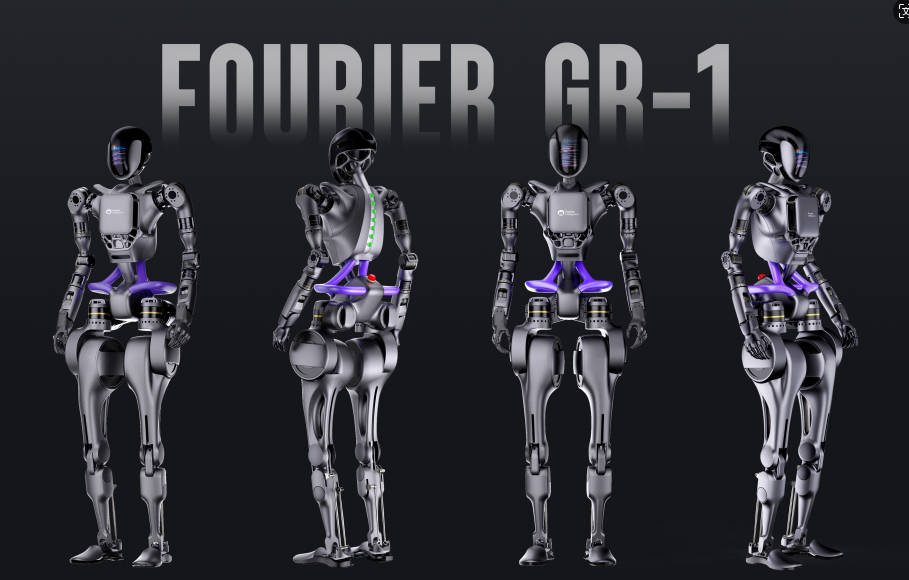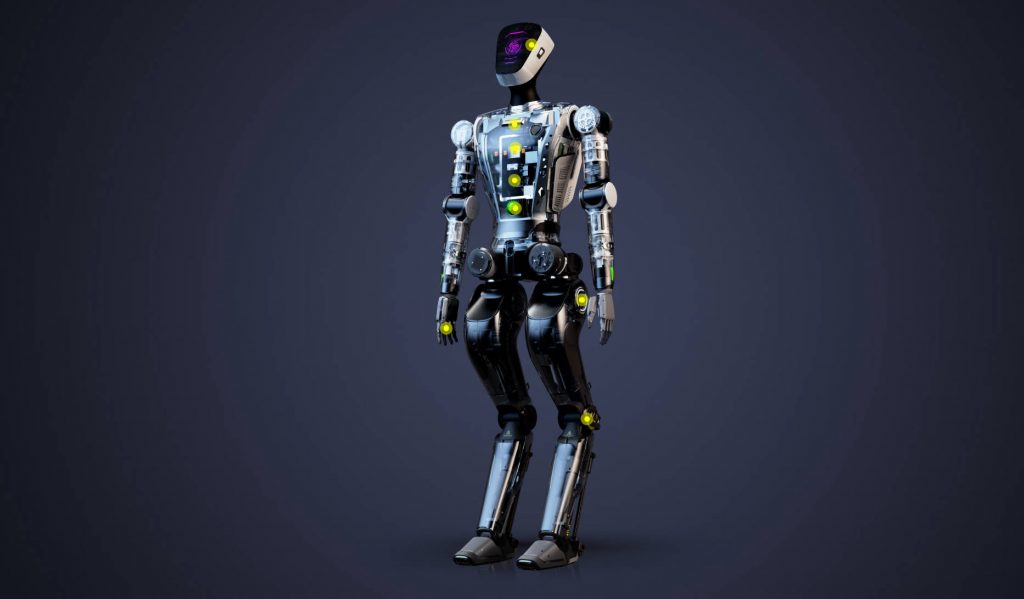The humanoid robot industry is set to become a hotspot within three years.
On August 19, 2021, Tesla unveiled its humanoid robot project plan for the first time at its AI Day. According to the information disclosed at the 2022 AI Day, the development platform for this humanoid robot was successfully manufactured in February of the beginning of the year, taking only six months. Subsequently, in April and August, the robot respectively achieved the functions of walking and arm swinging.
On September 30, 2022, the Optimus robot prototype was displayed for the first time at the AI Day of the same year. Compared with the development platform, it has achieved significant upgrades in many aspects. On March 1 of the following year, Tesla further demonstrated the ability of Optimus to perform complex tasks such as walking around and tightening screws at the Investor Day, fully proving Tesla’s expertise in the field of four-wheeled robot (i.e., car) development is also applicable to the field of humanoid robots.

At the same time, with the release of ChatGPT on November 30, 2022, the new wave of artificial intelligence led by OpenAI is changing human society at an unprecedented speed. Looking back, since the advent of deep learning in the early 2010s, especially with the emergence of the Transformer algorithm in 2017, deep learning has been pushed to a new height of the era of large models.
In 2023, Tesla shared the latest progress of Optimus at the Investor Day again, demonstrating its ability to walk around and perform fine operations such as tightening screws through the video. Tesla CEO Musk also revealed that the laboratory has multiple Optimus robots, and these robots make full use of Tesla’s expertise in the manufacturing field. The actuators, battery packs, and other key components are all custom-designed by Tesla.
In May of the same year, Nvidia founder and CEO Huang Renxun predicted at the ITF World 2023 Semiconductor Conference that the next important development direction of artificial intelligence will be “embodied intelligence,” that is, intelligent systems that can understand, reason, and interact with the physical world. He believes that the deep integration of AI and robots will open up infinite imagination space.
Entering December 2023, Tesla released the Demo video of the second iteration version Gen2 of Optimus, and Musk also actively promoted it on social platforms. In the video, the appearance of Optimus Gen 2 is more exquisite, and the movements are more anthropomorphic. It can not only squat while maintaining balance but also accurately pick up eggs and place them in the other hand, and even show the ability to dance to music at the end of the video.
In addition, at the beginning of 2024, Figure AI also announced that it has obtained multiple rounds of investment, including from OpenAI, Microsoft, Amazon, and Nvidia, totaling $675 million. Subsequently, the company released a video showing that its humanoid robot Figure 01 has visual recognition and language understanding capabilities. The robot can pick up an apple on the table and explain the reason for its behavior, and it can also respond smoothly to human questions after a short period of thinking, with hand movement speed close to the human level. According to Henderson, a humanoid robot headhunting company in Guangzhou, the robot uses end-to-end neural network technology, and the video is not accelerated. The founder and head of the AI team of Figure AI said that the robot’s visual reasoning and language understanding capabilities are provided by OpenAI, while the fast and dexterous movements are achieved by the neural network of Figure AI.
In July of the same year, Tesla announced that its second-generation humanoid robot Optimus will make its debut at the World Artificial Intelligence Conference held in Shanghai. Tesla said that this exhibition will witness further evolution of humanoid robots.
With the continuous advancement of artificial intelligence technology, the robot industry, especially the field of embodied robots, has developed rapidly. Recently, the Mobile ALOHA general-purpose robot jointly developed by Google DeepMind team and the Chinese team from Stanford University has attracted widespread attention on social media for its excellent performance in cooking and doing housework. Different from the robots that were previously mainly used in the industrial field, Mobile ALOHA perfectly combines mobility and dexterity and can perform a variety of tasks, including watering flowers, washing dishes, arranging chairs, and even shaving for people.
So far, there are many humanoid robot research and development institutions and products worldwide, including but not limited to Tesla’s Optimus, Figure AI’s Figure 01, Google DeepMind team’s Mobile ALOHA, Boston Dynamics’ Atlas, 1X Technologies’ EVE and NEO, UBTECH’s Walker, Furiel GR-1, Data’s XR4, Yushu Technology’s Universal Humanoid Robot H1, Leju’s Kvavo, Zhiyuan Robot Expedition A1, and the open-source humanoid robot Qinglong of Humanoid Robot (Shanghai) Co., Ltd. These products not only show the continuous technological progress of humanoid robots but also foretell their wide application prospects in future society.
The prospect of humanoid robots is beautiful, and the premise of marketization is to achieve embodied intelligence and reduce cost prices.
According to Tesla CEO Musk’s prediction, in the future, assuming the ratio of humanoid robots to the population reaches 2:1, the demand for humanoid robots is expected to reach an astonishing 10 to 20 billion units, a number that may even exceed the demand for cars, indicating the wide application prospects of humanoid robots in human society.
To promote the innovative development of the humanoid robot industry, in October 2023, the Ministry of Industry and Information Technology of the People’s Republic of China officially released the “Guiding Opinions on the Innovative Development of Humanoid Robots.” The opinion positions humanoid robots as disruptive products that integrate cutting-edge technologies such as artificial intelligence, high-end manufacturing, and new materials. Their potential is comparable to that of computers, smartphones, and new energy vehicles, and they are expected to profoundly change human production and lifestyle and reshape the global industrial development pattern.
Under this background, the Made in China 2025 strategy has laid a solid foundation for the development of industrial robots. Although in the field of industrial robots, the body shell has been independently manufactured, the core components such as the servo system, sensors, controllers, and reducers have been monopolized by Japanese and European enterprises for decades. However, with the continuous advancement of technology in recent years, by 2022, China has achieved localization in the manufacturing of some servo systems, controllers, and sensors, but there is still a certain gap with Japanese enterprises in the field of reducers.

Guangzhou headhunting companies learned that Gu Jie, chairman and CEO of Furiel Intelligence, reviewed the company’s development history, pointing out that in the early stage of establishment (2015), due to the immaturity of robot motion ability, AI algorithms, and market applications, the company chose to enter the field of rehabilitation robots. It was not until 2019 that the company officially launched a general-purpose humanoid robot project, aiming to promote robots to integrate into families and various industries like intelligent electric vehicles.
UBTECH’s co-founder, CTO, and executive director Xiong Youjun believes that the revival of the humanoid robot industry in recent years is due to the maturity of technologies such as AI large models. The development of these technologies has not only improved the intelligence level of humanoid robots, enabling them to solve more practical problems, but also improved the human-computer interaction experience, making motion planning more convenient and improving R&D efficiency. He emphasized that after half a century of development, humanoid robots have entered the stage of industrial landing, and their commercial application trends and landing scenarios have become more and more clear. As the best carrier of embodied intelligence, humanoid robots have shifted the interaction mode of human-computer collaboration from passive to active, achieving natural language interaction, and are expected to become the next generation of human-computer interaction centers and the real “intelligent terminals,” with great long-term value.
In addition, Shenzhen humanoid robot headhunting companies also noticed that Peng Zhihui, the founder of Zhiyuan Robot, revealed at the launch of Zhiyuan Robot Expedition A1 that the commercialization of the product will first focus on the industrial intelligent manufacturing field and cooperate with car companies, 3C manufacturers, etc. The company is committed to controlling the target price of the product within 200,000 yuan and plans to achieve commercial landing in the second half of this year, first showing its application value in the industrial manufacturing field.
Humanoid robot companies are the hot topic of financing this year and will also be the drivers of future urban GDP.
According to authoritative data disclosed by “Industrial Quadrant,” in the first half of 2024, at least 22 financing transactions were successfully completed in the global humanoid robot field, with a total financing amount exceeding 7 billion yuan. Notably, China’s financing activities in this field were particularly active, with a total of 13 financings completed, totaling more than 2.5 billion yuan.
Since April 2024, the construction wave of humanoid robot innovation centers has rapidly spread across various provinces and cities. Specifically, on April 16, the Guangdong Embodied Intelligence Robot Innovation Center was officially established in Shenzhen; on April 18, the Chengdu Humanoid Robot Innovation Center announced its operation, and at the same time, the Zhejiang Humanoid Robot Innovation Center also took root in Ningbo; by July 19, the Anhui Humanoid Robot Innovation Center also successfully settled in Hefei. The establishment of this series of innovation centers marks that the layout of the humanoid robot industry across the country is accelerating

Comments are closed